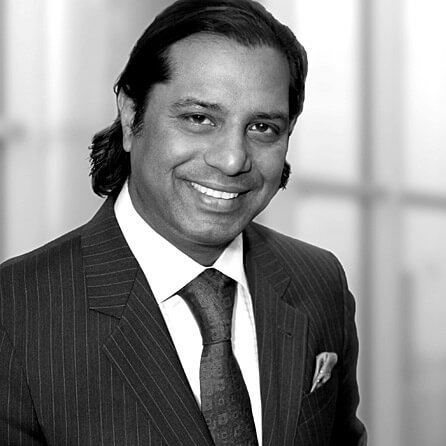Gynecomastia (Man Boobs)
“The worst part of gynecomastia is the pain of something hitting or rubbing or hitting you in the chest just right!”
Anonymous Patient Quote
Gynecomastia, colloquially known as man boobs, is a surprisingly common condition. In many cases it is rightly of little concern, but in some cases it can become a source of personal embarrassment, mean-spirited teasing or even bullying. Men afflicted with this condition are painfully shy and go to extreme measures to avoid removing their shirts in public settings such as the pool, beach, or gym. The presence of gynecomastia may undoubtedly be a source of deep concern to many men.
Physiologic gynecomastia has a trimodal age distribution, with incidence peaking in newborns, adolescents, and men older than 50 years. Up to 90 percent of newborn boys have palpable breast tissue secondary to the influence of maternal estrogens during pregnancy. Newborn gynecomastia, although concerning to parents, usually resolves spontaneously within four weeks of birth. Children with symptoms that persist after their first birthday should be examined further as they may be at risk of persistent pubertal gynecomastia.
One-half of adolescent males will experience gynecomastia, with typical onset at 13 to 14 years of age(classified as Tanner* stage 3 or 4). An increase in estradiol concentration, lagging free testosterone production, and increased tissue sensitivity to normal male levels of estrogen are possible causes of gynecomastia in adolescents. Adolescents may also experience nonphysiologic gynecomastia as the result of substance, supplement, or medication use. In some cases, gynecomastia may represent the unmasking of genetic conditions with delay of expected pubertal development. Although adolescent physiologic gynecomastia often resolves spontaneously, intervention may be warranted to treat any resulting emotional distress.
While all men have breast tissue (it is estimated that 1% of all breast cancers occur in men), in some cases it does persist beyond puberty. This may be in part due to the persistence of hormonal influences and in some cases other extrinsic factors. These extrinsic, or external influences, may include prescription pharmaceuticals or other agents.
Once the presence of gynecomastia has been noted with the attendant psychological impacts, what can be done about it?
Treatment for gynecomastia must always begin with a comprehensive review of the client’s medical history followed by a thorough physical exam. Gynecomastia occurring as a secondary manifestation of hormonal producing tumors, such as hCG producing testicular cancers, are well known and new onset gynecomastia in a young adult should always include a testicular exam. In cases of obesity, the estrogen burden on the patient may be increased due to an increase in the enzyme aromatase responsible for converting testosterone to estradiol. Estradiols favor further fat deposition — or localized adiposity, in areas such as the chest.
Once underlying, and possible dangerous medical conditions, have been excluded, the treatment of gynecomastia is surgery. It is unlikely that third party payers will cover the expense of treatment even in severe cases (Simons classification grade III).
In the past, treatment of gynecomastia involved simply excising the tissue through an incision strategically placed within the nipple and areola. While effective, the result was frequently the presence of a visible scar on the chest and over-resection of the tissue. The latter frequently resulted in unsightly deformation of the nipple.
Fortunately, the treatment of gynecomastia has evolved and Plastic Surgeons are able to treat gynecomastia with cosmetically superior results. The use of Power Assisted Liposuction (PALS) technologies now allows for excision of the fibrous glandular tissue in the same way that fatty tissue can be sculpted during liposuction procedures. Any residual glandular tissue may be carefully and selectively excised using small incisions measuring around 5-8 mm in length which are placed at the border of the areola and heal leaving little trace of the surgery.
In addition to excising the glandular tissue, the chest muscles represented by the pectoralis major, are framed in order to achieve a result representing the idealized male chest. The space between the latissimus muscle posteriorly and the lateral border of the pectoralis major muscle anteriorly is defatted using liposuction in order to define the serratus muscle. Furthermore, the transition between the pectoralis and upper abdomen musculature is defatted in order to define the chest. In a further refinement, fat may be grafted to the upper and middle thirds of the pectoralis muscle to augment the upper chest. These steps result in an aesthetically pleasing shape to the male chest that no longer needs to be hidden when at the beach or gym.
Although full recovery (unrestricted gym activities) is approximately 4-6 weeks, one may return to work in 3-4 days. Wearing a compression vest after surgery is mandatory for 3-4 weeks. I typically do not use drains after gynecomastia surgery.
To learn more about the treatment of man boobs, or gynecomastia, please contact our friendly staff at the Reddy Aesthetic Institute to arrange a personal and discreet consultation.
*The Tanner Scale is a system for measuring development of children, adolescents, and young adults by evluating primary and secondary sex characteristics.
Dr. Reddy is a Board Certified Plastic & Reconstructive Surgeon with an interest in Body Contouring procedures including the treatment of gynecomastia and sculpting of the male chest. Dr. Reddy completed the Microaire PALS Hi-Def course in Barcelona, Spain.

P. Pravin Reddy, MD is a Board Certified Plastic & Reconstructive Surgeon and a member of the American Society of Plastic Surgeons.